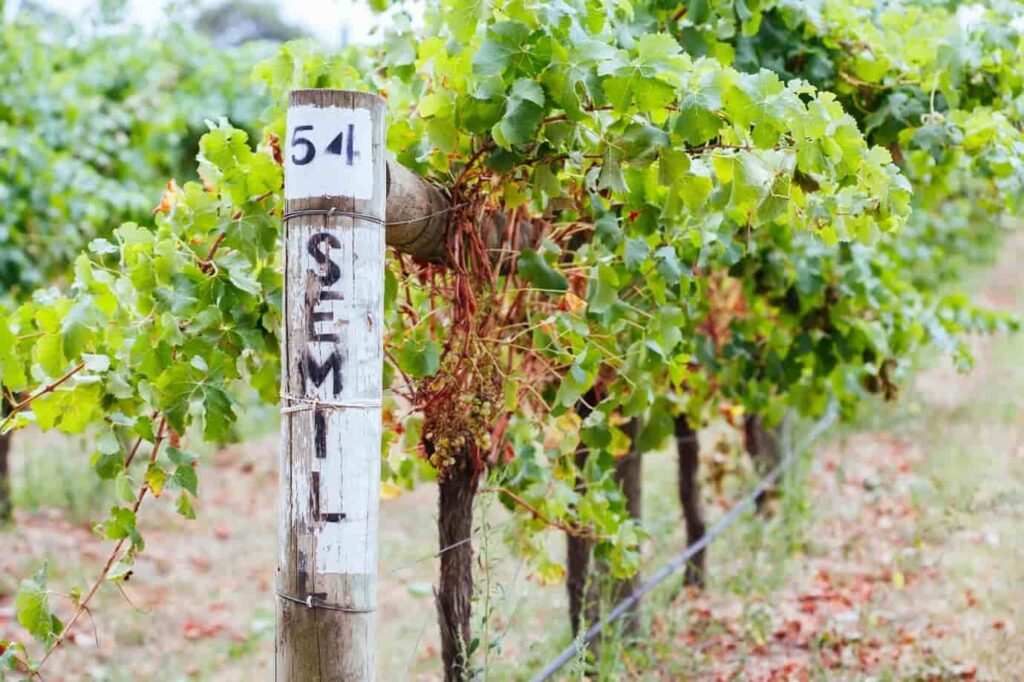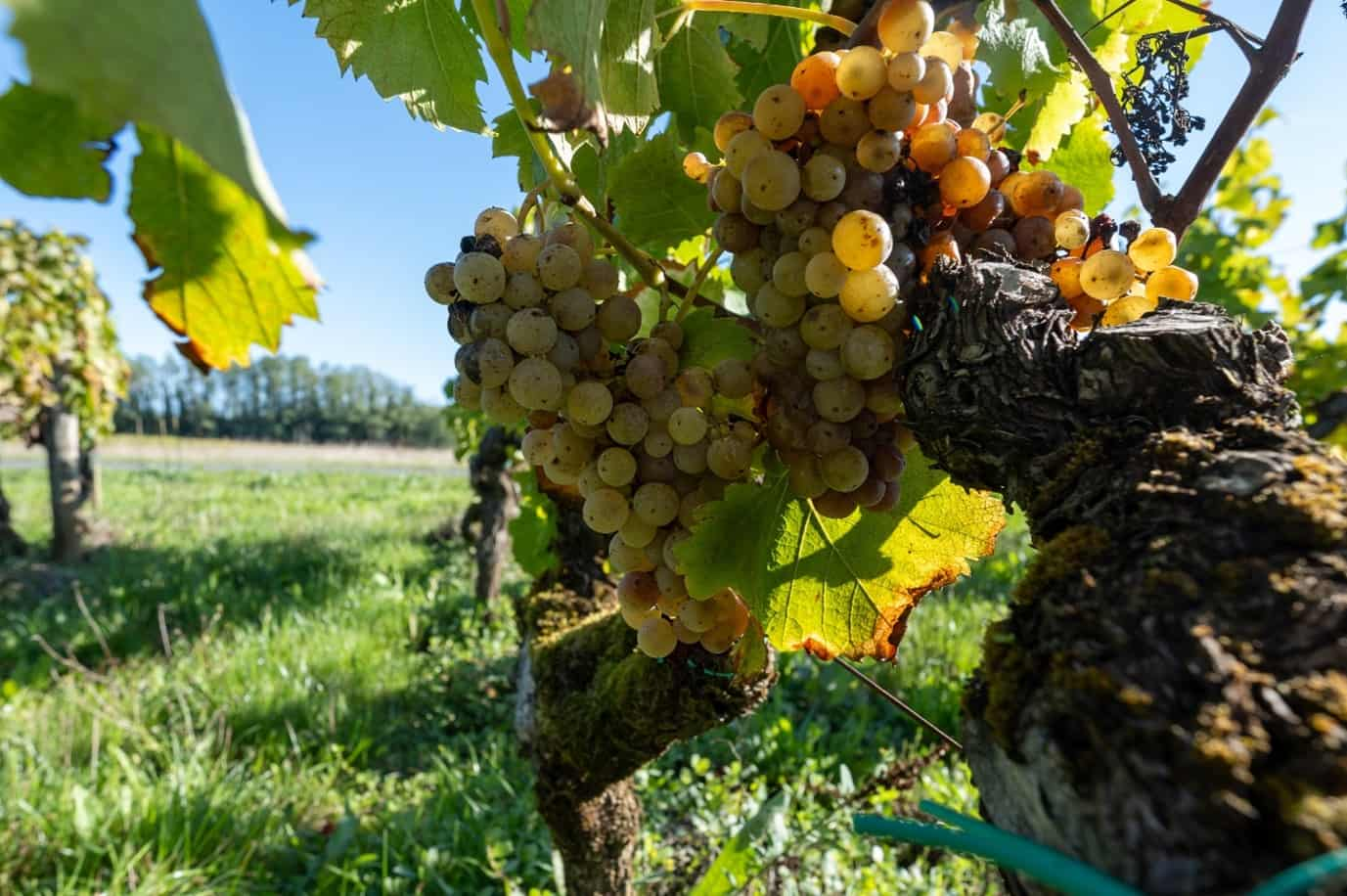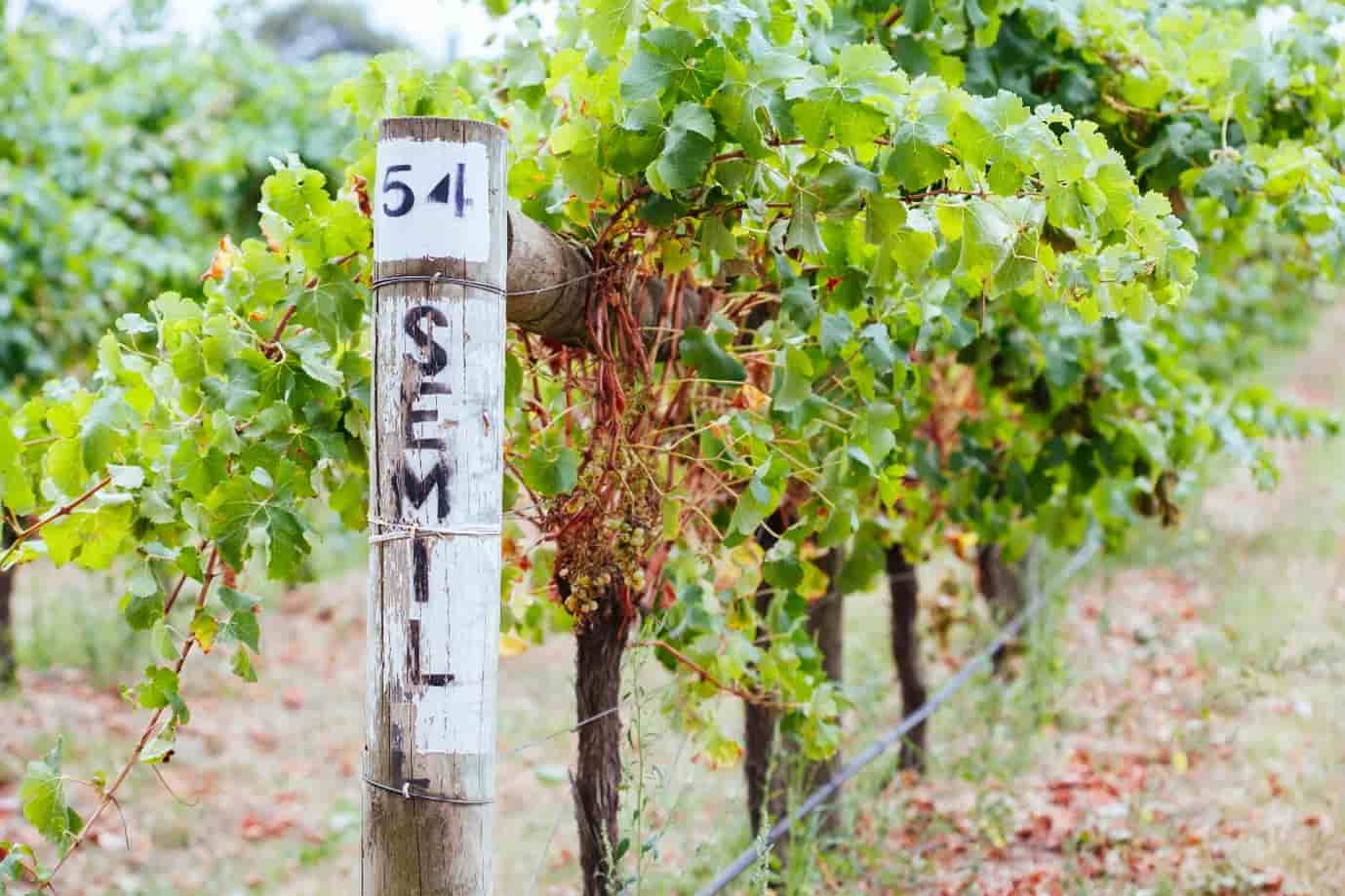
What to look for when buying Sémillon | A buyer’s guide to a white grape variety

For centuries, winemakers have blended Sémillon with Sauvignon Blanc to produce exceptional dry (and sweet) Bordeaux Blanc. In Graves and Pessac-Leognan, the grape yields rich, full-bodied and complex whites, renowned for their honeysuckle bouquet. In Sauternes, meanwhile, it delivers the most remarkable and long-lived sweet wines on earth. But despite the grape’s laudable qualities, Sémillon is usually part of a double act: the yang to Sauvignon Blanc’s yin. The latter contributes freshness, acidity and finesse to the blend.
This guide will explore the classic aromas of Sémillon, where it is mostly produced, and what buyers should look out for when buying a Sémillon bottle.
Click on a link to jump to that section:
What kind of wine is Sémillon?
The signature white grape of Bordeaux produces complex wines of great ageing potential and versatility. Although it is often blended in France, Sémillon is the foundation stone of Sauternes, including the legendary sweet wines of Chateau d’Yquem. Its affinity with maturation in oak, with Sauvignon Blanc as its partner, is responsible for the waxy complexity and structure we associate with dry white Bordeaux. Indeed, its ability to age well is one of the reasons why producers love the grape, now found in locations as diverse as Australia’s Hunter Valley, Chile, and South Africa. Moreover, the vine itself is very long-lived – centenarian parcels are not unusual in Bordeaux – which appeals to growers who want low yields and high quality.

Sémillon is also a very flexible and forgiving variety, able to thrive in both maritime and very warm climates. In its youth, dry white Sémillon from a cooler climate is often mineral-scented and taut, with notes of citrus, lanolin, and figs; under-ripe Sémillon can be very grassy and herbaceous, with a distinct whiff of tobacco. Bottle-matured Sémillon from Hunter Valley has a curious tendency to display aromas we readily associate with new oak – vanilla and buttered toast. Nevertheless, its weight and mouthfeel vary from light to full-bodied, depending on the climate, terroir, and winemaking involved. Thus, a blended example (Sémillon and Sauvignon Blanc) from Bordeaux can taste very different to a New World single-varietal, depending on the blend’s percentages.
Sémillon by region
France
The most widely planted white variety in Bordeaux has a strong following in Sauternes and Graves, in addition to the vineyards of Entre Deux Mers and Premières Côtes de Bordeaux. Its traditional role as a major component in Bordeaux sweet wines is partly due to the grape’s thin skins. They are particularly susceptible to the botrytis mould (also known as noble rot), as this makes the grapes shrivel and gives them their sweetness. After pressing and fermentation, these unctuous wines are then typically blended with the more pungent Sauvignon Blanc – and occasionally Muscadelle – to create bottled nectar. Its leaner, racier, acid structure is much-appreciated in warmer vintages, when Sémillon’s acidity levels can be negligible. However, Sémillon will usually constitute at least 70% of the blend.
Yet in the vineyards of Pessac-Leognan, Sémillon often plays understudy to Sauvignon Blanc. At Château Smith Haut Lafitte, for example, a small percentage (around 10%) of Sémillon is used to round out the edginess of Sauvignon in dry white wines. But there are properties, such as Laville Haut-Brion, where it plays a more dominant role.
Australia
Australian Sémillon finds its greatest expression in the Hunter Valley. Introduced to New South Wales in the 1800s, the grape thrives on the white sand and loamy terroirs that characterise the valley floor. It remains one of Australia’s classic wine styles, evolving in a bottle from a tightly wound mouthful of citrus fruit to a toasty and tropical delight. The best wines offer explosive layers of complexity balanced out by freshness and a distinct cut of minerality. Notable producers include Tyrrells and Mount Pleasant. But some exceptional wines are also being made in the Barossa Valley, in addition to Margaret River in Western Australia with popular producers such as Moss Wood being highly sought after.

Celebrated winemakers like Vanya Cullen are minded to blend their Sémillon with Sauvignon Blanc, producing an elegant facsimile of Bordeaux Blanc; oak maturation is often used to add structure and depth. Yet growers in Barossa are increasingly emulating the Hunter Valley paradigm: harvest the berries at low alcohol levels (about 11-12 degrees) and cold-ferment in stainless steel. The results are impressive.
South Africa
Over 1100 hectares of Sémillon are grown in South Africa, imported by French Huguenots in the late 17th century. Like Australia, different wineries take different approaches to the grape, albeit Sémillon is normally blended with its opposite number. The best wines are celebrated for their exotic fruit and seductive texture: oily and luscious. They are an underrated part of South Africa’s viticultural heritage.
Sémillon viticulture & winemaking
Sémillon is a vigorous grape variety, liable to crop at inflated yields unless it is subject to judicious pruning and green harvesting. It is also susceptible to downy mildew and botrytis, although the latter is a desirable occurrence when making sweet wines. When produced in a dry style, its golden berries can reveal a myriad of enticing flavours, ranging from lime to green fig, beeswax, and chamomile. It tends to deliver the best results when cultivated on calcareous and alluvial soils. However, much will depend on where the grapes are grown and how the wine is made. The Bordeaux tradition strongly emphasises the importance of oak in both fermentation and maturation.
In contrast, producers in Hunter Valley often take a very different approach. Their primary objective is to vinify free-run juice in a reductive manner (excluding oxygen), fashioning a 100% Sémillon dry white. After a cool fermentation in stainless steel, the wine is bottled within a few months of the harvest – another big difference between Aussie and Pessac-Leognan winemakers. Then, slowly but surely, the wines will acquire a luminescent green-gold colour and a voluptuous, nutty complexity. They are among the finest whites being made in Australia today.
At Jeroboams, we stock a variety of white wines from some of the most popular winemaking regions worldwide. Browse through our white wines here.
How do you choose Sémillon wines?
Encouraged by the variety’s superlative quality, growers worldwide are trying their hand at producing structured and refined expressions of the grape; they are achieving much success in Australia, New Zealand, Chile, and Washington State. It can be enjoyed in its youth or in the advanced stages of maturity. It is the ultra-chameleon of the wine industry – perfect for any occasion and context.
The question is: do you seek pure varietal flavours or the complexity that flows from blending? Thus far, only in Australia does Sémillon consistently make a top-quality dry white on its own. Its shrine remains the Hunter Valley, although Sémillon wines from the Western Cape and, indeed, Barossa Valley are improving all the time. Once you have made your purchase, however, ensure that any bottles are stored in a cool (ideally between 10 to 13°C) and dry place. Busy kitchens should be off-limits for wine storage, as temperature changes are bad for storing wines.
Contact Jeroboams today to find out more information.
Frequently asked questions
What wines are similar to Sémillon?
Sémillon is a unique variety: it has few equals in the fraternity of high-quality white grapes. However, in weight and structure, it can resemble a Chardonnay wine, although its aromatic profile is perhaps more closely aligned to Pinot Gris and Pinot Blanc.
What food pairs well with Sémillon?
Mature dry Sémillon is an ideal accompaniment to roast veal, richly sauced white fish, or chicken. Meanwhile, Sauternes is far more versatile than people imagine – pan-seared foie gras, blue cheeses, oysters, and lobster all work. Very well, in fact.
Related content
A Buyer’s Guide to Choosing Viognier White Wine
Guide to South Australian Wine | The Top Australian Wine Region




